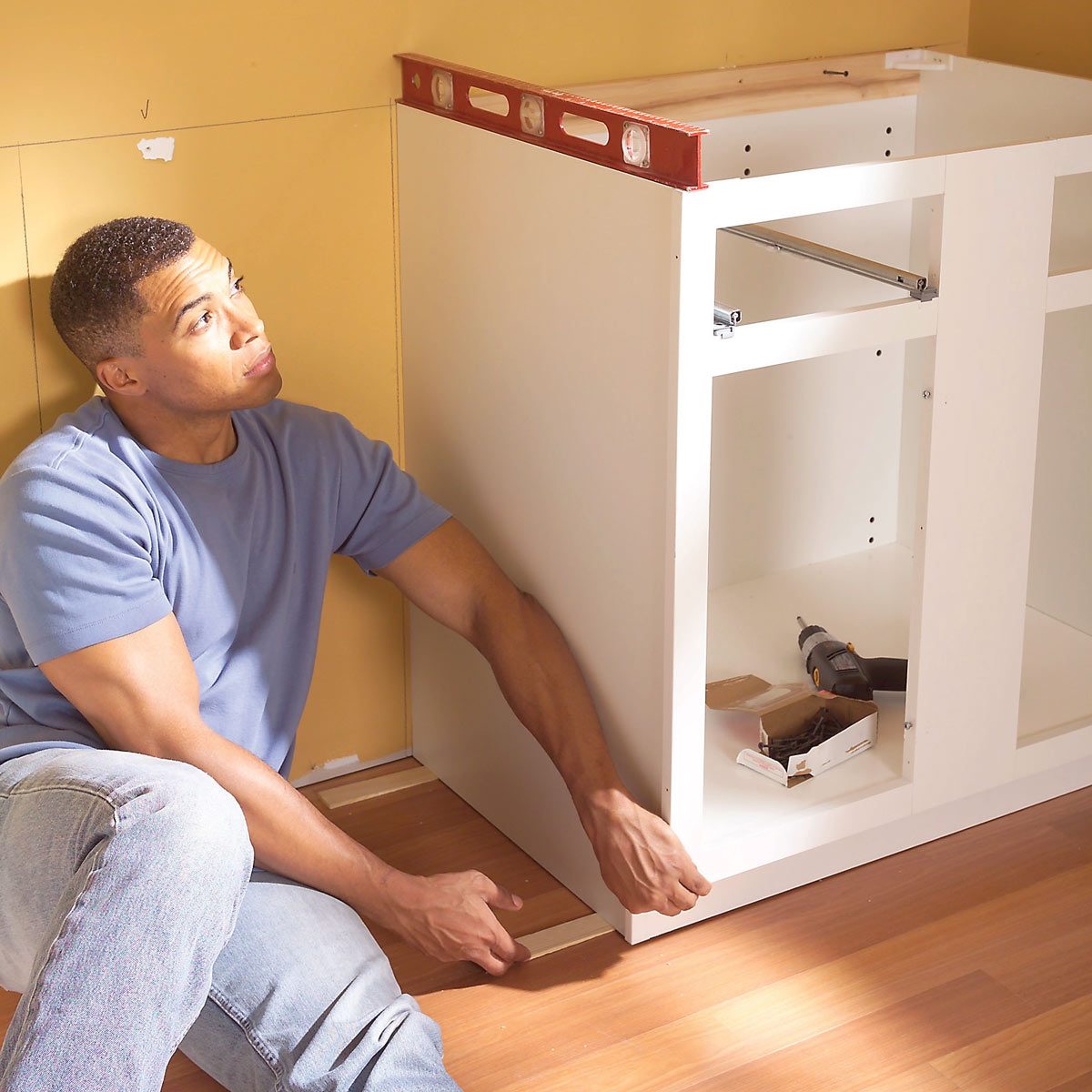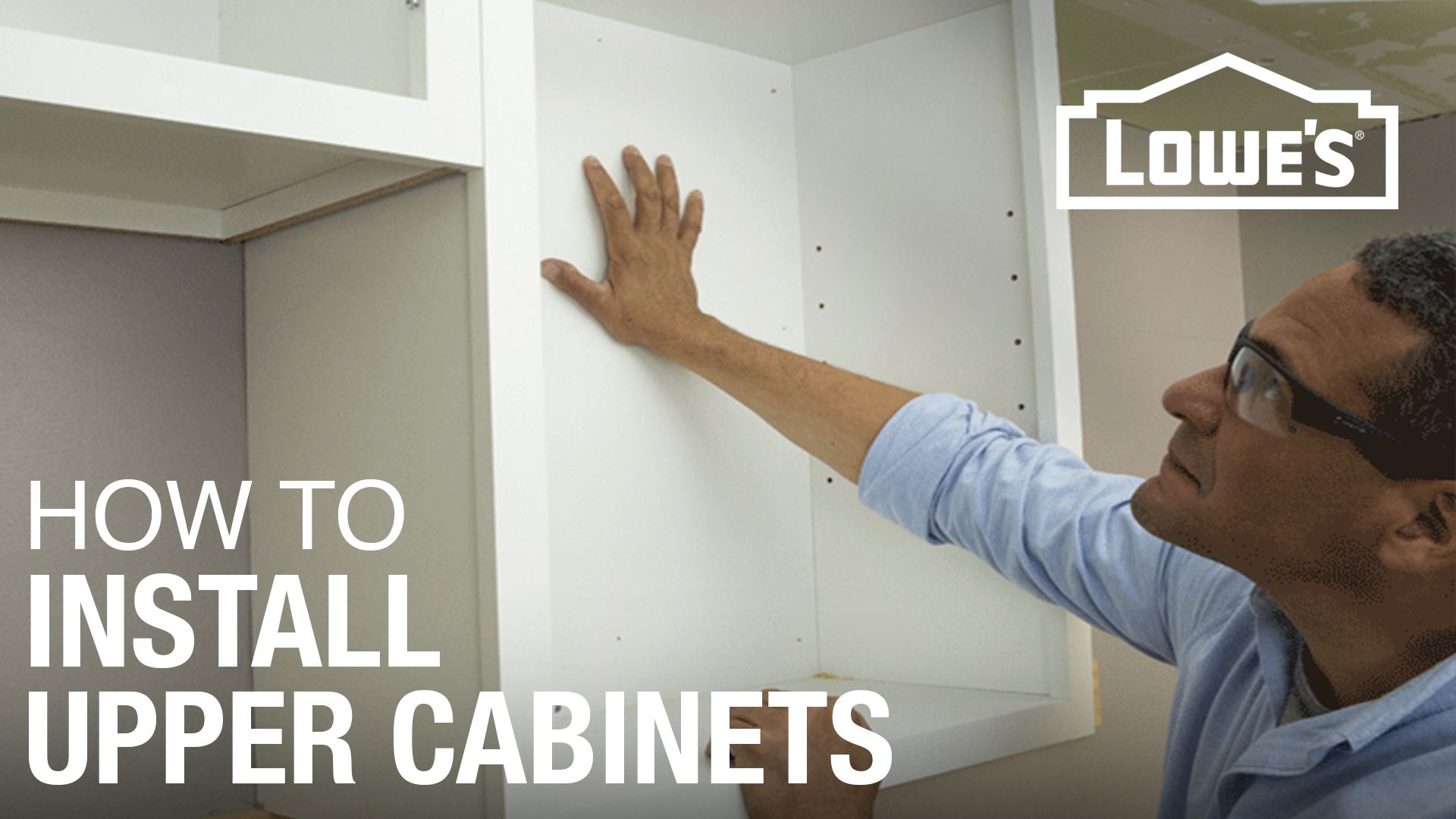Planning and Preparation

Installing kitchen wall cabinets is a significant undertaking, requiring meticulous planning and preparation to ensure a successful outcome. A well-defined plan not only saves time and effort but also guarantees a professional-looking and functional kitchen.
Measuring and Planning the Layout
Accurate measurements are paramount for a perfect fit. Start by measuring the wall space where the cabinets will be installed, taking note of any obstacles like windows, doors, or electrical outlets. Consider the overall kitchen layout, including the location of appliances, sink, and other furniture. A detailed sketch of the kitchen with dimensions is highly recommended.
Determining Cabinet Sizes and Quantities
Once the layout is finalized, determine the required cabinet sizes and quantities. Standard cabinet depths typically range from 12 inches to 24 inches. Upper cabinets are usually 30 inches or 36 inches tall, while base cabinets can be 34.5 inches or 36 inches tall. Consider the height of the countertops and the desired overall look.
Choosing Cabinet Materials and Finishes, How to install kitchen wall cabinets
Cabinet materials play a significant role in both aesthetics and durability. Popular options include wood, laminate, and thermofoil. Wood cabinets offer a classic look and can be customized with various finishes, while laminate is more budget-friendly and resistant to moisture and scratches. Thermofoil cabinets are known for their durability and smooth, easy-to-clean surfaces.
Tools and Materials Checklist
A comprehensive checklist ensures you have all the necessary tools and materials before starting the installation. Essential tools include a level, stud finder, tape measure, drill, screwdriver, saw, and safety glasses. Materials may include cabinet screws, shims, construction adhesive, and caulk.
Installation Process: How To Install Kitchen Wall Cabinets

The installation process involves attaching the cabinets to the wall using mounting brackets, ensuring they are level and aligned, and then securing them with screws or fasteners. Connecting the cabinets together creates a seamless look and ensures stability.
Attaching Mounting Brackets
Before attaching the cabinets, it is crucial to install mounting brackets to the wall. These brackets provide a secure foundation for the cabinets, ensuring they are properly supported and stable.
- Mark the wall: Use a level to mark the desired height of the cabinets on the wall. Ensure the markings are level and consistent across the wall.
- Install mounting brackets: Use a stud finder to locate wall studs and install the mounting brackets directly into the studs for maximum support. If installing on drywall, use drywall anchors to secure the brackets.
- Space brackets appropriately: Space the brackets according to the manufacturer’s recommendations, typically every 16 inches. This ensures the cabinets are evenly supported and prevents sagging over time.
Leveling and Aligning Cabinets
After installing the mounting brackets, the next step is to level and align the cabinets. This ensures they are straight and even, creating a professional and aesthetically pleasing finish.
- Use a level: Use a level to ensure the cabinets are perfectly horizontal and vertical. Make adjustments as needed using shims to ensure the cabinets are level.
- Check alignment: Double-check the alignment of the cabinets with adjacent cabinets, ensuring they are flush and even. Adjust as necessary using shims or spacers to ensure a seamless look.
Securing Cabinets to the Wall
Once the cabinets are level and aligned, the next step is to secure them to the wall using screws or fasteners. This ensures the cabinets are firmly attached and prevent them from moving or falling.
- Use appropriate fasteners: Use screws or fasteners that are designed for the specific type of wall and cabinet material. For example, use drywall screws for drywall walls and wood screws for wood cabinets.
- Secure cabinets to brackets: Attach the cabinets to the mounting brackets using the appropriate screws or fasteners. Ensure the screws are long enough to penetrate the brackets and securely attach the cabinets to the wall.
- Check stability: After securing the cabinets, gently push and pull on them to ensure they are stable and secure. If they move or feel loose, tighten the screws or fasteners.
Connecting Cabinets
To create a seamless look and ensure stability, connect the cabinets together using cabinet clips, screws, or dowels. This step ensures the cabinets are securely joined and create a cohesive unit.
- Use cabinet clips: Cabinet clips are a common method for connecting cabinets. They are easy to install and provide a secure connection.
- Use screws: For a stronger connection, use screws to connect the cabinets together. Ensure the screws are long enough to penetrate both cabinets and provide a secure bond.
- Use dowels: Dowels are another option for connecting cabinets. They are often used for cabinets that require a strong and precise connection.
Finishing Touches

The final stage of installing kitchen wall cabinets involves adding the finishing touches, which transform your cabinets from functional units into stylish and usable elements of your kitchen. This stage includes installing cabinet doors and drawer fronts, ensuring they are properly aligned, adding hardware, and taking care of cleaning and maintenance.
Installing Cabinet Doors and Drawer Fronts
Once the cabinets are secured to the wall, it’s time to install the doors and drawer fronts. This step enhances the aesthetic appeal of your kitchen and provides easy access to the storage space.
- Before starting, make sure the cabinet doors and drawer fronts are properly aligned. Measure the distance between the hinges and the edge of the cabinet to ensure a uniform look.
- Next, attach the hinges to the cabinet doors and drawer fronts. The type of hinges will determine the installation process, but generally, you’ll need to screw the hinges to the cabinet and then to the door.
- Finally, hang the doors and drawer fronts on the hinges. Adjust them to ensure they open and close smoothly without any obstruction.
Adjusting Cabinet Doors and Drawers
After installing the cabinet doors and drawer fronts, it is essential to adjust them for proper alignment and functionality. This ensures smooth operation and prevents any potential issues like uneven gaps or doors that don’t close properly.
- Most hinges come with adjustable screws that allow you to fine-tune the alignment of the doors. Use a screwdriver to adjust these screws to ensure the doors are level and flush with the cabinet frame.
- If the drawer fronts are misaligned, you can adjust the slides. Most drawer slides have adjustable screws that allow you to move the drawer front forward or backward, ensuring proper alignment with the cabinet frame.
Adding Hardware
Adding hardware like handles, knobs, and hinges is the final step in completing the installation of your kitchen wall cabinets. This step adds functionality and a personalized touch to your cabinets.
- Before attaching the hardware, make sure you have chosen the right type and size. Consider the style of your kitchen and the size of the cabinet doors and drawer fronts when selecting hardware.
- To install the hardware, use a drill and appropriate drill bits to create pilot holes for the screws. This will prevent the wood from splitting and ensure a clean installation.
- Once the pilot holes are drilled, attach the hardware to the cabinet doors and drawer fronts using screws. Make sure the screws are screwed in securely to prevent the hardware from loosening over time.
Cleaning and Maintaining Kitchen Wall Cabinets
Cleaning and maintaining your kitchen wall cabinets is essential for keeping them looking their best and extending their lifespan. Regular cleaning helps remove dirt, grime, and fingerprints, while proper maintenance ensures that the cabinets remain functional and free from damage.
- To clean your cabinets, use a damp cloth with a mild cleaning solution. Avoid using harsh chemicals or abrasive cleaners, as they can damage the finish of the cabinets.
- Wipe down the cabinets regularly to prevent the buildup of dirt and grime. Pay particular attention to areas that are prone to fingerprints and spills.
- For stubborn stains, you can use a baking soda paste. Apply the paste to the stain, let it sit for a few minutes, then scrub it off with a damp cloth.
- To maintain the hinges and hardware, lubricate them with a light oil or silicone spray. This will prevent them from squeaking and ensure smooth operation.
How to install kitchen wall cabinets – Installing kitchen wall cabinets can be a rewarding DIY project, but it’s crucial to ensure they’re securely mounted. Similar to how you’d install xtreme garage storage cabinets , using sturdy wall anchors and level measurements is essential for a stable and aesthetically pleasing outcome.
Following the manufacturer’s instructions and taking your time will ensure your cabinets are properly installed and ready to serve you for years to come.
Installing kitchen wall cabinets can be a rewarding project, allowing you to customize your space and enhance functionality. Once your cabinets are in place, consider adding a touch of elegance and practicality with menards under cabinet lighting. These lights can illuminate your countertops, making food preparation easier and adding a warm glow to your kitchen.
After installing the lighting, you can enjoy the fruits of your labor with a beautifully updated kitchen.
